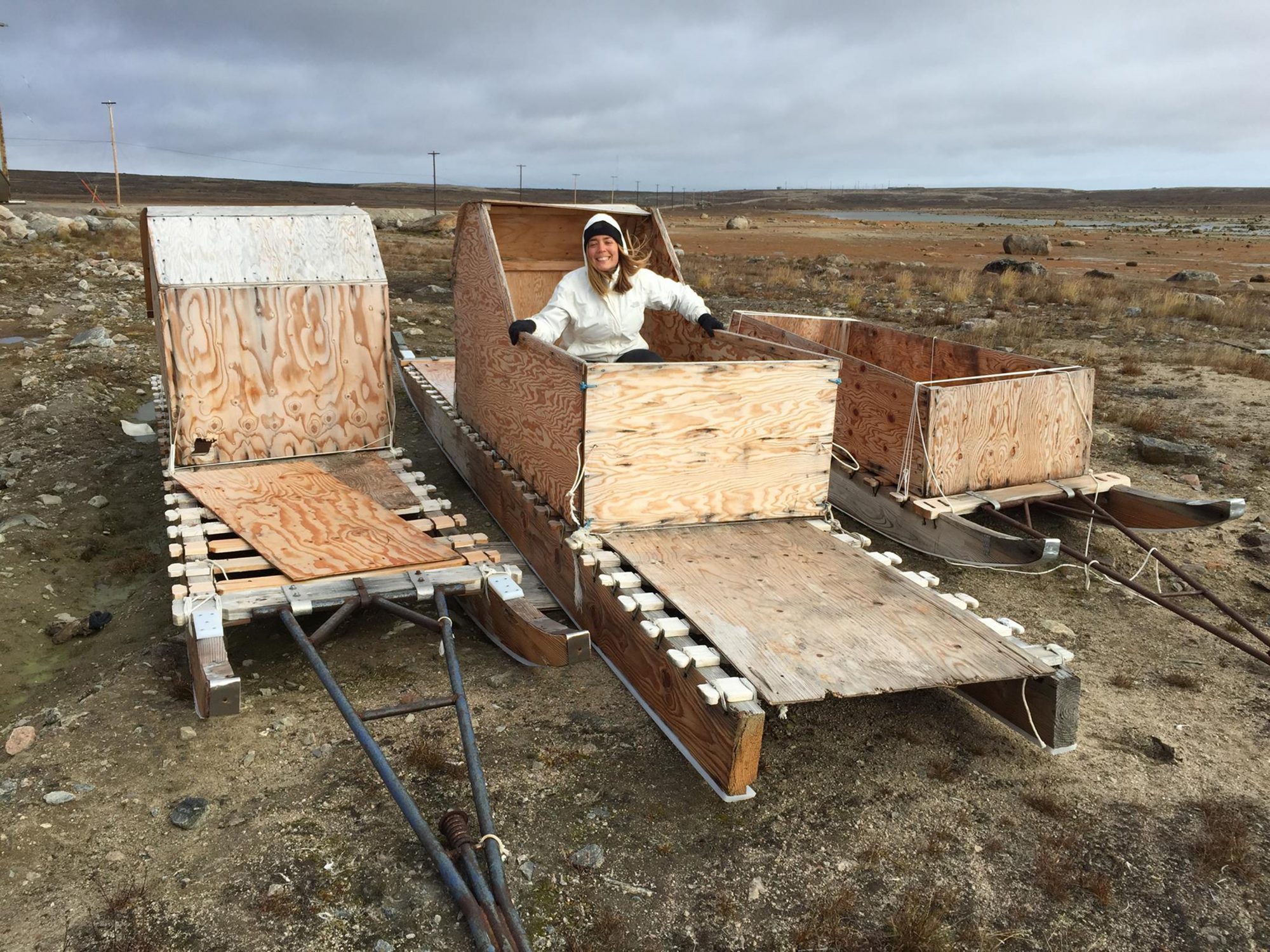By Lin Moody
Carleton PhD students Trycia Bazinet, from the School of Indigenous and Canadian Studies and Émélie Desrochers-Turgeon, from the Azrieli School of Architecture and Urbanism, have both won Vanier awards. These extremely prestigious scholarships are awarded to Canadian PhD students who conduct exceptional research. They are valued at $50,000 per year for three years during their doctoral studies.

Colonial Constructions
Growing up near Apitipik in Northern Quebec, Trycia Bazinet, who identifies as a white settler, heard several stories about neighboring Indigenous people. She says that many of these stories were “disturbing” and that several spaces in which she grew up were “shaped through racial, gendered and colonial constructions.”
In 1996, Apitipik was designated a national historic site of Canada.
Bazinet wanted to know what happened in the 1960s on the Apitipik peninsula. “Why were the Algonquins pushed away from this specific ancestral site at this time, how it was enforced and what are the lingering memories from this displacement?”
Apitipik sits at the eastern end of Lake Abitibi. The lake has become the focus of Bazinet’s PhD research as it is expected to disappear over the next 200 years due to post-glacial rebound, a process which Bazinet says was accelerated by the arrival and practices of white settlers in the area.

Apitipik
For Bazinet, this has raised a lot of questions.
“I am hoping to get a sense of what the contemporary relations to the lake are, asking if they are they still significant, who uses it and in what way, who has connections to it and what are the natures of these connections. Why was it made an historical site on the terms of the settler-colonial government? Is colonially marking a site as historic signifying a marking that its living purpose is a past one? Is the reclamation of this specific place significant to the Algonquin people – and if not, why? Do people generally have something to say about the connection between colonial racism and sexism in Abitibi and the broader changes in relationship to the land that have taken place?”
Through these questions, she hopes to connect her research to the limitations of the current VIENS Commission, a Provincial Commission that stemmed from allegations of discriminatory treatment of Indigenous people by various public services, including the police.
Bazinet will use her Vanier funds to travel back to Abitibi and spend time engaging with people and places and build relationships to see what could emerge from bringing these stories to the surface. She also plans on using her funds to continue supporting community organizing and initiatives in the Ottawa region and elsewhere.
Bazinet applauds the support she is receiving from her supervisors and her department: “Geographer Sophie Tamas is an incredibly supportive and brilliant person. She always asks me diligent and relevant questions that pushes my writing, and her own writing is a delight to delve into. My other supervisor is Zoe Todd, a truly inspiring scholar, who is a vocal against ongoing issues of racism and colonialism in the everyday space she is a part of.”

Second Vanier Award Winner
Émélie Desrochers-Turgeon’s research consists of the study of settler colonial spatial practices in the Canadian Arctic.
“Ultimately, I hope that my research will raise questions on how to unsettle the current building practices in Inuit communities and advocate for more ethical, holistic, sensitive and inclusive alternatives,” says Desrochers-Turgeon. “Fundamentally, my project is committed to deconstructing Western assumptions and imagination about space and architecture while supporting Inuktitut language and Indigenous ways of knowing.”
With her Vanier funds, Desrochers-Turgeon will do fieldwork in the Arctic. This can be very expensive due to the cost of flights, the shortage of housing and the high cost of food.

She hopes that her project will unfold in the form of partnerships and collaborative practices.
“Therefore, the funding will allow me to commission fellow researchers and translators which bring their voices to the project.” She said it is also crucial to think how her research will be disseminated and benefit local communities.
Desrochers-Turgeon began her doctoral studies in architecture at Carleton’s Azrieli School of Architecture and Urbanism in 2017. Her doctoral research is a continuation of certain questions that were raised during her master’s degree and during a research project in Kangirtugaapik. She also encountered ethical questions “as a white settler architect occupying and designing for unceded land in Canada.”
She credits her supervisor, Prof. Dr. Federica Goffi as having been an incredible influence. “I would have never applied to the program without her support. Dr. Goffi’s written works on built conservation, time and architectural imagination, as well as her curiosity and dedication to research and students, have been very inspiring for me.”

An Ideal Base for Research and Training
As one of only a few universities offering a PhD program in Architecture in Canada, Desrochers-Turgeon says: “Carleton University is an ideal base for my research and training. It is renowned for its expertise in cultural heritage, building conservation and for engaging with critical historical research. My research will gain from a proximity to the National Archives and the Canada Mortgage and Housing Corporation in Ottawa.”
The two Vanier awards add to a growing list of accomplishments by Carleton’s graduate students. This year, Brandon Robinson placed second in the Science Action competition hosted by the Natural Sciences and Engineering Research Council of Canada. Michelle MacQueen won one of the 25 top Storyteller awards from the Social Sciences and Humanities Research Council. Daniella Briotto Faustino placed second in the Ontario Three Minute Thesis competition. Troy Kenny won one of two Hilary M. Weston scholarships. A Carleton team placed second in the 7th National Annual Public Administration Case Competition. And Justin Yan was the only Canadian to place in the top 10 of a major Northern American architecture student competition.
Thursday, July 19, 2018 in Faculty of Graduate and Postdoctoral Affairs, Research
Share: Twitter, Facebook



